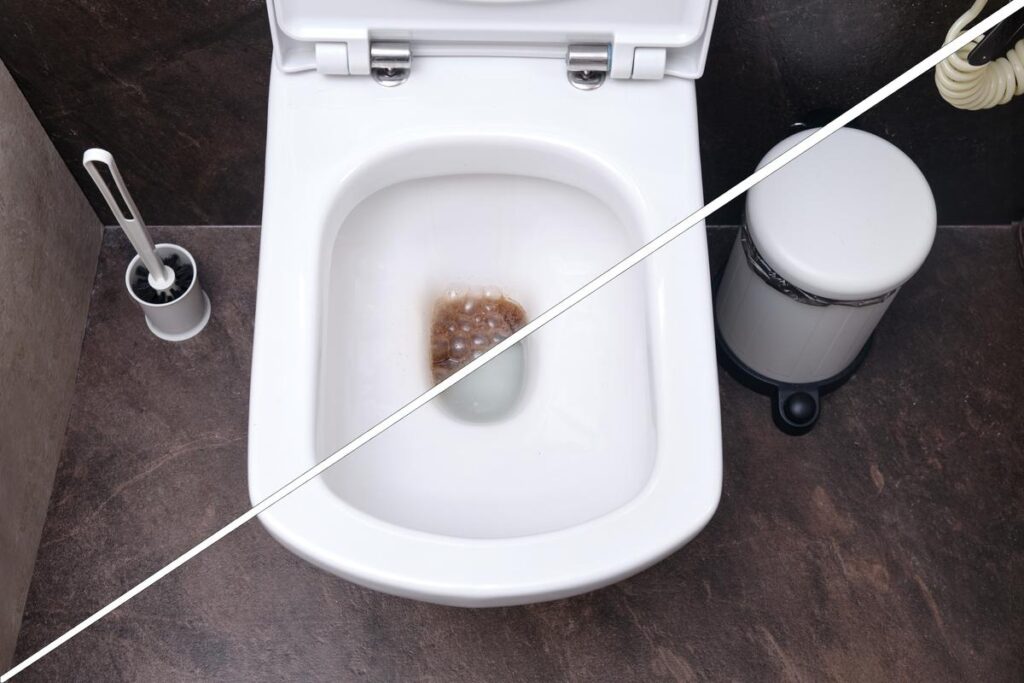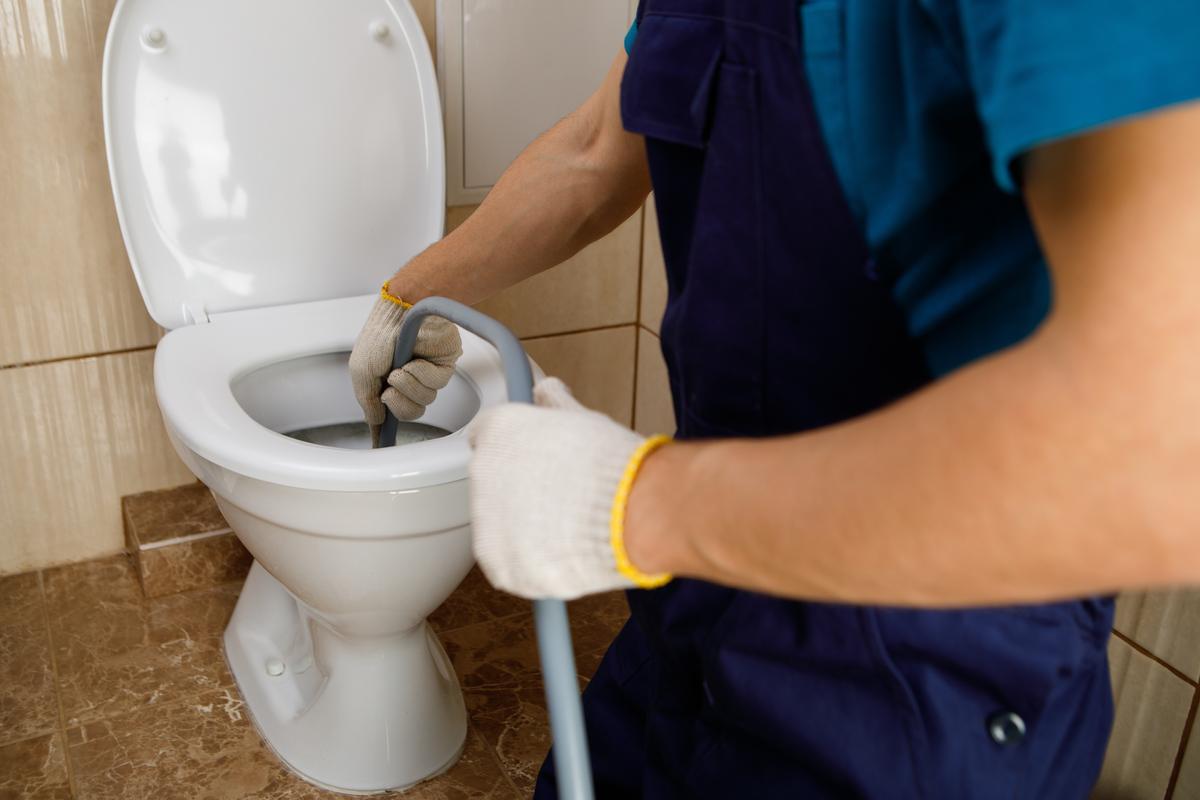Facing a blocked toilet but don’t have a plunger? Don’t worry! This article offers practical, easy-to-follow steps to unclog your toilet using everyday household items. We’ll discuss methods like using baking soda, vinegar, hot water, and even a wire hanger. Keep reading to learn how to get your toilet back in working order!

Understanding Toilet Clogs: The Common Causes
Before diving into the DIY solutions, it’s crucial to understand the common causes of toilet clogs. These culprits include:
- Excessive toilet paper usage: Using too much toilet paper can create a buildup that clogs the drain.
- Flushing non-flushable items: Items like wipes, paper towels, feminine hygiene products, and even large solid waste, should never be flushed down the toilet as they can easily clog the pipes.
- Construction debris: During renovations or repairs, debris like sawdust, drywall scraps, or cement dust can accidentally find its way into the toilet, causing a blockage.
- Root intrusion: In older homes with older sewer lines, tree roots can sometimes infiltrate the pipes, causing obstructions.
The Hot Water Method: A Simple Start
Hot water can work wonders in dissolving greasy or soapy substances that might be causing the clog. Simply fill a bucket with hot water (not boiling, as this could damage the toilet) and pour it slowly into the toilet bowl. Repeat this process if necessary.
Combining Baking Soda and Vinegar: Natural Clog-Busting Science
This classic DIY remedy relies on the chemical reaction between baking soda and vinegar to break down organic matter. Pour about half a cup of baking soda into the toilet bowl, followed by one cup of white vinegar. The fizzing action should loosen the clog. Cover the bowl with plastic wrap and let it sit for 30 minutes before plunging.
Dish Soap: A Slippery Solution for Toilet Clogs
The slippery nature of dish soap can help dislodge stubborn clogs. Pour about half a cup of liquid dish soap into the toilet bowl and let it sit for 15 minutes. Then, plunge vigorously to force the clog through.
The Wire Hanger Trick: DIY Unclogging
A wire hanger can be surprisingly effective in reaching and breaking up clogs in the toilet trap, the curved portion at the base of the toilet where waste accumulates. Unbend the hanger into a long, straight wire and carefully insert it into the drain opening. Manipulate the wire to break up the clog and push it through.
Utilizing Water Pressure for Clog Removal
If the clog is deeper in the sewer line, a high-pressure water hose can be used to blast it away. Connect the hose to a faucet and adjust the pressure to a moderate level. Aim the hose at the toilet drain and flush simultaneously to dislodge the clog.
Toilet Brush Tactics: An Unconventional Tool
While not the most glamorous method, a toilet brush can be surprisingly effective in breaking up soft clogs. Gently insert the brush into the drain and scrub vigorously. This may not fully clear the clog, but it can loosen it enough for plunging or other methods.
Using a Toilet Snake: Reaching Deeper Clogs
A toilet snake, also known as an auger, is a specialized tool specifically designed for clearing toilet clogs. It consists of a long, flexible cable with a coiled end. Insert the snake into the toilet drain and carefully feed it through until you encounter resistance. Turn the snake handle to rotate the coiled end, breaking up the clog and pushing it through to the sewer line.
Knowing When to Call a Plumber
If none of the DIY methods work, it’s time to call a plumber. Persistent clogs, particularly those accompanied by unpleasant odors, may indicate a deeper issue in the plumbing system. Professional plumbers have the expertise and tools to diagnose and resolve more complex clogs.
Preventive Measures: Keeping Your Toilet Clog-Free
To avoid future clogs, adopt these preventive measures:
- Flush only toilet paper and human waste down the toilet.
- Dispose of feminine hygiene products, wipes, and other non-flushable items in the trash.
- Regularly clean the toilet bowl with a toilet brush and cleaning solution to prevent buildups of waste and grime
By understanding the common causes of toilet clogs and adopting preventive measures, you can minimize the risk of encountering this frustrating issue and avoid the hassle of calling a plumber.
What is the best thing to put in a toilet to unclog it?
The best thing to unclog a toilet is a plunger with a flange extender. The flange extender is specifically designed to fit into toilet drains and create a tight seal, resulting in more effective plunging. If the plunger fails, a toilet auger or snake can be used to physically break up the clog.
How to unclog a toilet without a plunger fast?
If your toilet is clogged and you lack a plunger, don’t fuss. A quick practical solution is to use hot water and dish soap. Pour a half cup of dish soap into the toilet bowl, followed by hot (not boiling) water. The soap acts as a lubricant while the hot water breaks down the obstruction, enabling an easy flush after letting it sit for about 20 minutes.
How to unclog a toilet without a plunger with plastic wrap?
To unclog a toilet without a plunger using plastic wrap, first ensure the toilet bowl isn’t filled to the brim. Then, cover the top of the bowl tightly with plastic wrap. After that, flush once and apply gentle downward pressure on the wrapped area. The suction thus created will often clear the clog.
Does pouring hot water down a toilet unclog it?
Pouring hot water down a toilet can sometimes unclog it if the blockage is not severe. Hot water can help soften or break down the waste causing the clog, enabling it to move through the pipes. However, this method may not be effective for significant blockages and professional assistance might be required.
Conclusion
While a clogged toilet is a nuisance, there are many ways to unclog it without a plunger. From hot water to dish soap, these methods are often effective. However, if the clog persists, don’t hesitate to call a plumber. Use these preventative tips to avoid future clogs. Stay prepared and confident in your unclogging abilities!


